Cloud 🌥 Forms And About To Rain ☔
This is the Nature of the atmosphere of at my area this evening. It was as if we are about to experience a sky fall.

Clouds are condensed droplets or ice crystals from atmospheric water vapor. Clouds form by the rising and cooling of air caused by convection, topography, convergence, and frontal lifting. Convection occurs when the Sun's radiation heats the ground surface, and warm air rises, cooling as it goes. Air also is cooled if an air mass is forced to move upward as a result of higher topography (e.g., a mountain range) in a process known as orographic lifting. Interestingly, when the air mass descends on the other side of the mountain, it warms and the clouds may disappear as the droplets transfer back to vapor
The counterclockwise motion of a low-pressure center draws air inward, and the convergence forces the air upward. Air also is lifted and cooled along either a cold front or a warm front. A cold front is the leading edge of an air mass that is colder than the air it is replacing. The front forms a wedge that pushes under the warmer air ahead, lifting it. A warm front is the leading edge of an air mass warmer than the air it is replacing.
Document source
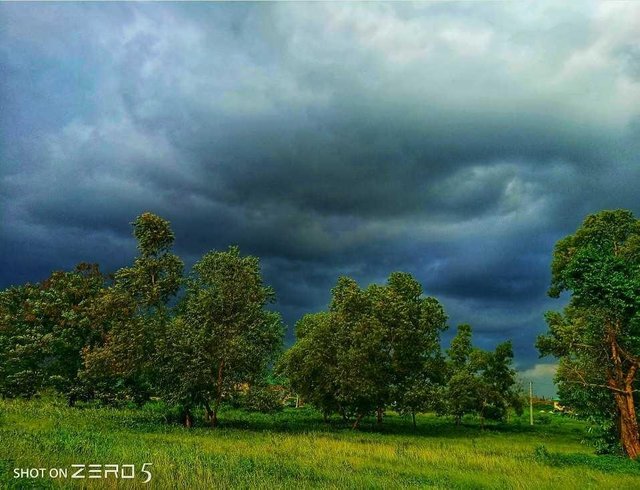
Classification of Clouds
Clouds are classified based on their shape and the height of the cloud's base above the ground. The most common shapes are cirriform, appearing feathery or fibrous; stratoform, appearing layered; and cumuloform, appearing as if piled up. Two additional words used to describe clouds are "nimbus," meaning rain, and "alto," meaning middle. Basic cloud types are based on height above the land surface and on the cloud's vertical development, as summarized below.
High clouds (cloud base above 7 kilometers or 23,000 feet). Usually consisting of ice crystals, these include cirrus, cirrostratus, and cirrocumulus.
Middle clouds (2 to 7 kilometers or 6,500 to 23,000 feet). Consisting of liquid droplets, these include altocumulus and altostratus.
Low clouds (below 2 kilometers or 6,500 feet). Consisting of liquid droplets, these include stratus, stratocumulus, and nimbostratus.
Clouds of vertical development (cloud base generally is in the low cloud range, but the tops may reach great heights). These include cumulus clouds and the towering cumulonimbus. *
Fog represents a special case of cloud-like formation. Although not truly a cloud, fog is essentially stratoform clouds on the ground.
Document source
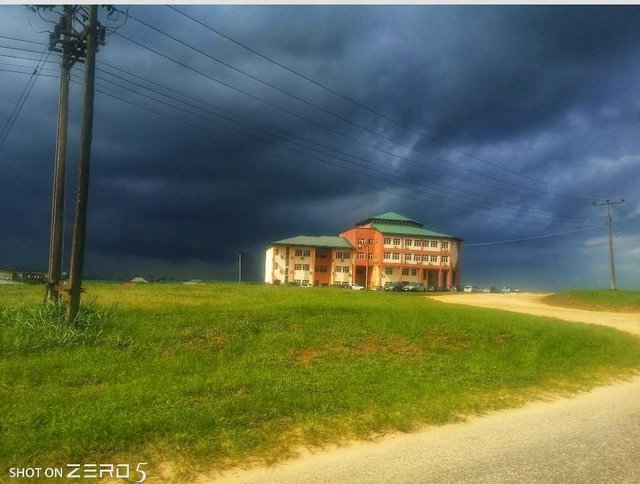
Cumulus Clouds.
Cumulus clouds are among the most interesting in terms of their shapes, which stir peoples' imagination and allow them to see a variety of "objects" or "scenes" in the sky. All cumulus clouds have two characteristics in common. They tend to be bulbous or popcorn-like on top, and have relatively flat bottoms. Why do they all share these features?
Cumulus clouds are classified as clouds of vertical extent. They form as air moves vertically, cooling until the water vapor in the air condenses. This vertical movement is the key to understanding the flat-bottomed character of these clouds. In a given area, for a given air mass, it is common to find that the cooling rate of ascending air is relatively constant. In other words, rising air will cool to a certain temperature at the same height above the ground throughout the area. Air moving vertically in that area will reach the condensation temperature at the same height above the ground and cloud formation will begin at that height. Consequently, the base of the cloud will be at the same height throughout and the cloud's base will appear flat.
As the air continues to rise and water vapor continues to condense, the cloud will extend vertically. The column of rising air actually consists of a number of currents with slightly different directions and may move as pulses. These currents move upward as they condense and give rise to the apparently independent bulbous lobes of the cloud.
Document source
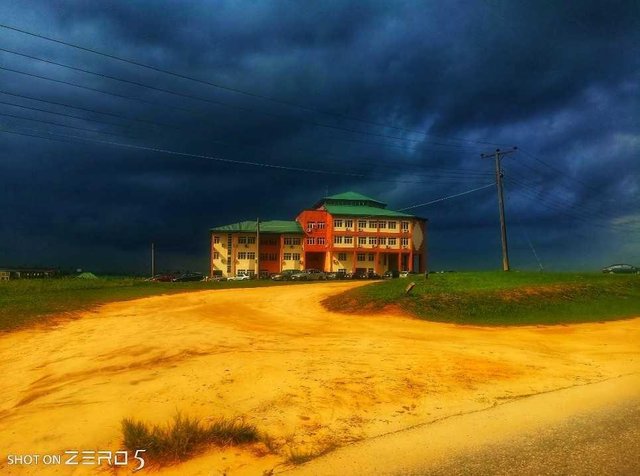
Precipitation Types
Precipitation elements begin to form in the part of the cloud where ice crystals and cloud droplets coexist. Most precipitation starts out as snow, except for rain that comes out of very low clouds. Precipitation will remain snow unless it falls through a layer of warmer air, in which case it will melt and remain rain unless it falls through a colder layer of air, where it may freeze and become sleet or ice pellets (as shown in the following figure). When the air at the ground level is below freezing, the raindrops can freeze when they hit the ground or other cold surfaces: it is then called freezing rain.
Document source
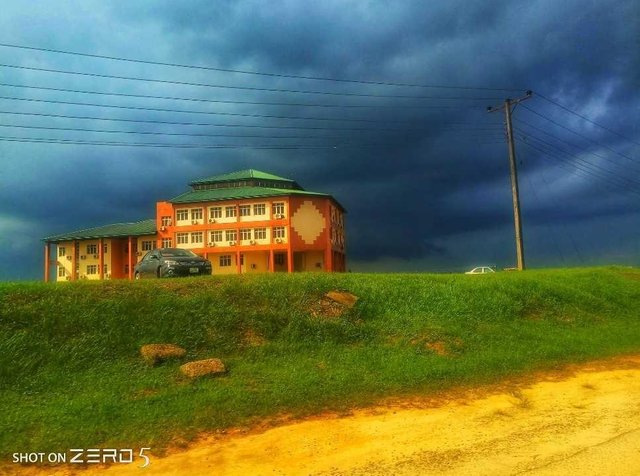
Hail is formed when a particle, like dust, attracts a drop of moisture to itself. The particle gets blown upward by strong updrafts in the cloud, and freezes as it goes through a colder layer of air. It is heavier and begins to fall, attracts more moisture and then gets forced upward again and again adding more frozen layers.
The varying intensities of rainfall have specific names. Liquid precipitation that is of a longer duration and larger drop size is called rain; when it falls in shorter spurts it is called a shower. Rain typically falls from lowlevel stratoform clouds with greater vertical extent. When the drops are very small, rain is called drizzle. A raindrop is about 1,000 times larger than drizzle.
Document source

Thunderstorms.
Thunderstorms go through stages of development from the beginning cumulus stage, when the cloud starts to grow vertically; to the mature stage, when heights may reach from 12 to 18 kilometers (8 to 11 miles); to the dissipating stage (see figure below).
In the cumulus stage, there is an updraft of warm air throughout the cloud, as shown in part (a) of the figure. As the warm updraft increases, the
cloud builds well above the freezing level (the point at which the temperature of the rising air has cooled to water's freezing point). The precipitation particles grow larger and become heavier. The rising air soon cannot hold them up, and they begin to fall. The particles drag some of the air along with them, creating a downdraft, as shown in part (b) of the figure.
As the updraft pulls more dry air into the cloud, some of the raindrops evaporate, and the air cools, making it colder and heavier than the surrounding air. This usually strengthens the downdraft. The falling precipitation causes more downdrafts to form throughout the cloud, beginning the dissipating stage, as shown in part (c) of the figure. During the dissipating stage, precipitation occurs from the entire cloud base.
Some thunderstorms can develop into lines of severe thunderstorms, producing high winds, hail, frequent lightning, heavy rain, flash floods, and even tornadoes
Document source
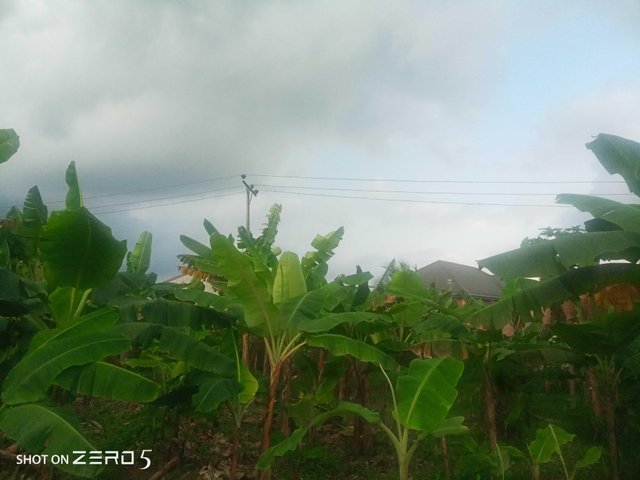
THANK YOU FOR VISITING MY BLOG TODAY!!
#steemjet is a community that had Global Steem Adoption as her main aim BUT now changing direction into Movies, Music, On-boarding Newbies and Teaching Cryptocurrencies in general ...
Respect to @dimimp
https://steemit.com/@dimimp
https://steemjet.org/
STEEMJET ARTS/ PHOTOGRAPHY DEPARTMENT
Headed by @mbj and it consist of @ubongj @shrazi @mrrpiusz @faith49 @aaniejack @mariapatrick @sancti @lovelymkylie @omowumi @jogreh @shuta @shartzy @jbee007 @machnbirdsparo @moeenali @owaniofficial @applo @jesse12 @sistem @samuel9135 @soufiani @gnarlyanimations @joshuaedoja @abdulmanan @sweetim @anikearn @ungest @essiential
============================================================================================================================================================
I AM STILL YOUR BOY @MBJ(SF1) HOD STEEMJET ARTS/ PHOTOGRAPHY DEPARTMENT _
LONG LIFE STEEMJET
ON THE WINGS OF SUPERSTARS, WE ARE MAKING CHANGES!!!


beautiful, magnificent
Amazing photography and you are great person of steemit. I like it your every post. thanks for sharing this natural photography... best of luck my friend @mbj
Best of luck to you too my friend...
Awesome photography.
Your photography is out of the world. Great work.
Thanks man .. you comment means a lot .
Oh mine... These are really beautiful. Weldone
Thanks debby. your are really active . I like that 👌👌👌👌👌👌
Beautiful photography. I like it this your nature photography. I appreciate your valuable content. thanks for sharing this..
Thanks for viewing this my friend.
You are most welcome my dear friend @mbj
Your post @upvote and @resteemit done.
Really so cloudy weather!
I love rainy season and rain.
Nice photography @mbj
Thanks for sharing with us.
Thank you too
Wow! Very cool and fantasy style. 👌
Have wonderful day @mbj!
have a wonderful day too.. are you really a Horse? 🙈🙈😨🙈🙈😨
So True! So cool, my friend. 👍👍👍
Dangerous cloudy weather @mbj i like rain don't like storm,, and want o tell you that, your photography alwyes nice/original.
Lol... but rain attracts storm and vise versa
wow,the sky looks awesome.
its a beautiful moment.
good photography.
Nature is bright and colorful . Thanks for your compliments
You captured this picture so beautifully. I am not a huge fan of rain tho but your description of the clouds 👌, I just followed you.
Keep steeming,
@soorefunmi
Thanks for your compliments dear friend.